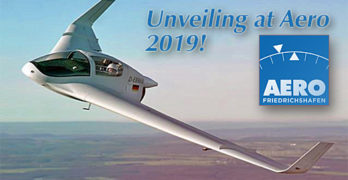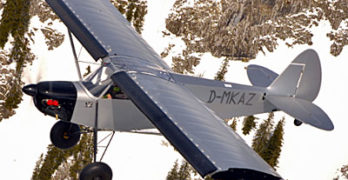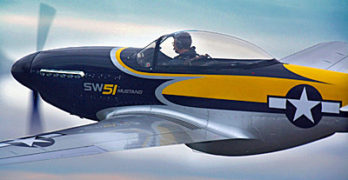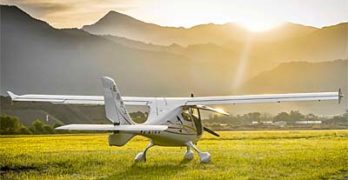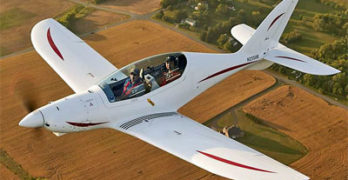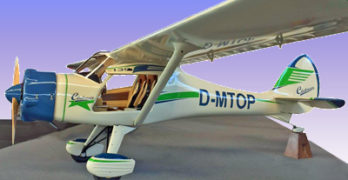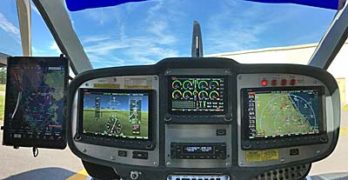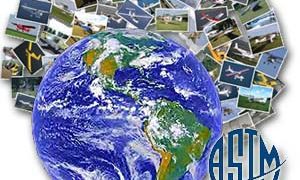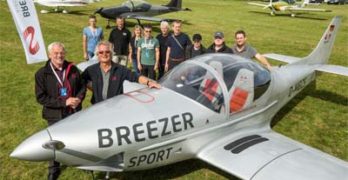Something old. Something new. Hang glider pilots I know are very familiar with Horten designs, a form of validation for modern hang gliders …flying wings, aircraft with no tail or fuselage structures. Yet many pilots don’t know Horton and have only a sketchy understand of flying wing stability.
World War II History
As the second great war progressed, Germany sought more advantage as fanatical government leaders pursued their ambitions. The war was dragging on and they needed better war equipment.
In 1943, Reichsmarschall Göring issued a request for design proposals to produce a bomber that was capable of carrying a 1,000 kilogram (2,200 pound) load over 1,000 kilometers (620 miles) at 1,000 kilometers per hour (620 mph) — the so-called “3×1000 project.” Conventional German bombers could reach Allied command centers in Great Britain, but were suffering devastating losses from Allied fighters.
At the time, no aircraft could meet these goals. Junkers turbojet engines could provide the required speed but had excessive fuel consumption.
Search Results for : 915
Not finding exactly what you expected? Try our advanced search option.
Select a manufacturer to go straight to all our content about that manufacturer.
Select an aircraft model to go straight to all our content about that model.
Zlin’s Shock Goes “Ultra” — Further Expanding Appeal of Bush Aircraft Configuration
After Aero 2016, we enthusiastically reported on the Zlin Shock Outback (as it is known to Americans; Shock Cub to other countries). You could fairly call it Europe’s answer to Just Aircraft’s jaw-dropping SuperSTOL, the amazing performer that captures nearly everyone’s attention from its introduction until today. Both designs go far beyond the best-selling Special LSA in the country: CubCrafters’ CarbonCub.With the original Shock Outback’s awesomely powerful Continental Titan X-340 producing 180 horsepower, pilots had a shock-and-awe response to the short takeoff roll and homesick-angel climb performance. The aircraft truly inspired many.How could Zlin go one better on this fascinating design? In a word: lighter.Admittedly, Shock Outback, sold in America by SportairUSA — with the big engine and all the other (sometimes optional) fixings such as their slatted wing, long-stroke landing gear, giant Alaskan tires — is an aircraft about as large as it could be and still fit in the LSA category.
Get Your Walter Mitty On — SW51 Coming At You Soon!
Many pilots who first set eyes on the SW51, a precisely faithful 70%-scale imitation of the famous North American Aviation P-51 Mustang managed to utter a single word: “WOW!”
Can you blame them? Look at this bird. The shape is classic and the detail is exquisite, finished down to the last rivet to mimic the famous World War II American fighter. Except, it’s a kind of fake. I better explain.
We’ve seen this spectacular execution of Hans Schwöller before. It was then called FK51 and we reported it earlier in more detail as to its construction. Now welcome ScaleWings Aircraft.
Thanks to his youthful associate, Christian von Kessel, SW51 has been refunded and reenfranchised, bringing it to reality. The earlier producer group stumbled and this amazing construction never reached market.
Can you handle a machine that looks this awesome? As you hear Hans and Christian state in the video, SW51 is easy to take off and land and docile in flight.
Something Completey Different …Perhaps Super Helpful to Pilots: Just 3 Words
At the Rotax event for journalists allowing reporters like me to fly their new 915 engine (more about that and a 915 review here), I met Guy Leitch, publisher of SA (South Africa) Flyer aviation magazine. Guy told me of something I’d never heard of but which I see as very useful to pilots (and virtually anyone, to be sure). It involves a mere three words.
Three words …and 57 trillion squares on a grid. That’s trillion with a T.
I am writing about locating a place on the planet, anywhere on the planet. Why is this useful? Don’t we already have GPS coordinates — latitude and longitude — to cover this need? It’s a valid question but entering a string of numbers can be challenging and we have three methods of doing so. Although we rely on this for navigation, the fact is a single digit error in entering those lat/long numbers could mean an error of many miles.
Shark in Florida! …No, the Good Kind — at Sun ‘n Fun 2018
Let me be clear. I have no issue with sharks in the sea. Besides, I don’t write about sea creatures.
This Shark is one I’ve long admired since meeting its creator, Jaro Dostal many years ago at the German airshow Aero Friedrichshafen …which will begin in mere days — we’ll be scouring the event for more fun flying machine discoveries.
Shark is represented in the USA by Jon Baron. He wrote, “We plan on flying south to Sun ‘n Fun in Lakeland, Florida and expect to arrive on Thursday, April 12th and stay for the rest of the show.”
Where can you find this handsome airplane? Well, not in a paid exhibit. Instead, “We’ll be in the General Aviation Camping Area,” indicated Jon. “If you want to meet up and check out the plane, please text me at (619) 794 7797, and I’ll send you a Google pin of our location.”
Shark Mako Coming
Shark is already a speedy, retractable gear aircraft — available in the USA only as a kit, unless you buy an already-built importer sales demonstrator.
Aviation Future Shock? Questions & Answers with a Australian Editor
Recently I had an exchange with Australian Flying magazine editor, Steve Hitchen. He asked some great questions and after giving my responses I realized some of his question were common ones I hear being discussed. So why not share our give-and-take? Steve’s questions are in blue.
I’d like to talk about power. With LSA restricted to 120 KIAS, it seems unlikely we’ll get much engine development to increase power unless regulations change to either allow an increase in speed or gross weight.
LSA are getting more power, to wit, Rotax’s new 915iS with 135-horsepower and the Continental Titan line with 180 horsepower. I do not think this is the end of the horsepower boosts …plus LSA speed and/or weight changes could conceivably follow in the USA but are currently not limitations in other countries that accept the ASTM standards as a basis for approval or certification.
Rotax iS Lane-Light Problems? HDX to the Rescue!
When Rotax moved their 912 iS Sport project from engineering to production, the big Austrian engine manufacturer elevated their already-immensely-popular 9-series engines to a higher level. Beside fuel injection, the company added electronic engine controls more advanced than any other in their inventory.
If you’ve flown with the iS Sport as I have you know it has terrific performance — torque was increased through an enlarged airbox along with other minor refinements — plus it gives even better fuel consumption. When flying with Aerosports‘ Jeremy Knoll at DeLand 2017, I heard that his trip from Wisconsin to Florida in the TAF Sling yielded fuel consumption rates of 2.7 gallons per hour at cruise. Man! That is some fuel efficient flying and that is part of what Rotax achieved with their iS model. They will use that technology plus more on their coming 135-horsepower 915 iS due on the market next year.
The Triumph of LSA — Helping the Entire World of Aviation (that’s no exaggeration!)
[from a talk given at DeLand Showcase 2017…]
After more than 13 years of LSA, I believe the industry can stand tall and proud…
Even with more than 140 attractive, innovative, and roomy LSA of every description, much of what makes LSA a strong and worthy addition to aviation is less obvious to many.
Sure, pilots love the nuts and bolts and hearing about performance or flight characteristics of our favorite aircraft but what has really brought LSA to the forefront of aviation… worldwide?
I’m lucky. I’ve had a front row seat to what I consider to be the greatest modern story in aviation.
Since the 1970s, I watched hang gliders evolve into ultralights and ultralights transform into LSA. Then I watched as a worldwide fleet launched into the skies over the past 15-20 years. This has been humbling to experience and a source of constant delight …as well as a source of material for thousands of articles and hundreds of video.
Breezer Aircraft Debuted New “Sport” Model Light-Sport Aircraft
In a eNewsletter to what they call “Breezerians,” the German company with the same name as their model reported a festive debut to their newest model called Breezer Sport.
At their home field and despite weather problems for arrivals coming from the south, the airport got “overloaded” with traffic.
The Breezer event was “not too hot, not too cold, great clouds for such an event, and little wind,” reported Wolfgang Nitschmann. “In short, a dream; even the catering was excellent.”
Among a collection of airplanes, rare and contemporary, Wolfgang and team unveiled their new Breezer Sport, joining other models called LSA Elegance and LSA Attraction. All Breezer models are available as B400 or B600 editions, the former being those conforming to Europe’s Ultralight Class, limited to 472.5 KG (with a parachute system, as is mandatory in Germany). The latter are the 600 kilogram Light-Sport Aircraft models.
Here’s our earlier looks at Breezer when first announced in the U.S.
Icon Updates: Crash Cause …yet Onward with Deliveries
Icon Aircraft CEO Kirk Hawkins shared a computer depiction of events leading to the crash of an A5 flown by factory chief pilot, Jon Karkow. From A5’s onboard black box Icon engineers assembled a second-by-second path for the ill-fated Light-Sport Aircraft. The data showed speed, power settings, flap position, and more.
According to the Napa Valley Register relating a National Transportation Safety Board report, “Pilot error caused the crash that killed two men in a small airplane on May 8, 2017 in Lake Berryessa.”
NTSB wrote, “The pilot, Jon Karkow, of Icon Aircraft in Vacaville, was flying too low, and mistakenly entered a canyon surrounded by steep rising terrain.” The investigative agency said Karkow had taken off from the Nut Tree airport in Vacaville at 8:50 a.m. accompanied by passenger, Cargi Sever, a new Icon employee. The pilot intended to take Sever on a familiarization flight in the Icon A5 amphibious Light-Sport Aircraft, said NTSB.
- « Previous Page
- 1
- …
- 11
- 12
- 13
- 14
- 15
- 16
- Next Page »


